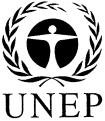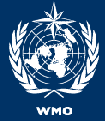|
|
|
|
 International
Efforts International
Efforts |
|


In 1988,
the UN Environmental Programme (UNEP) and World
Meteorological Organization established the
Intergovernmental Panel on Climate Change (IPCC).
In 2001,
the 3rd Assessment Report of the IPCC stated:
If no efforts are taken to prevent the emission of
greenhouse gases, the global surface temperature in 2100
will be 1.4~5.8℃
higher then in 1990, and the sea level will rise 9~88cm.
Also, the projected increase in carbon dioxide
concentration since 280ppm from the Industrial
Revolution, 360 ppm in 1992, will be 540~970 ppm in
2100, 90~250% of the amount in 1750. If the amount of
carbon dioxide concentration is to be maintained at
twice the amount compared to before the Industrial
Revolution, then the current carbon dioxide emission has
to be lowered be more than half.
Figure:
http://sd.erl.itri.org.tw/fccc/ch/intro/intro_3.htm |
|
 United
Nations Framework Convention on Climate Change United
Nations Framework Convention on Climate Change |
|
I.Cause: The
UN General Assembly, in response to suggestions from the
Second World Meteorology Convention, passed and established
the Intergovernmental Negotiating Committee for a Framework
Convention on Climate Change (INC/FCCC), and granted it the
authority to draw up treaties and any other necessary legal
tools.
II.Conferences:
The INC/FCCC held its first conference in Washington from
February 4th~14th, 1991, formally
bringing the problem of climate change onto the UN stage.
May, 1992, after 5 conferences and over 150 countries
negotiating, The UN's New York headquarters passes the
United Nations Framework Convention on Climate Change, or UNFCCC, on May 9th, 1992.
III.Explanation: On June, 1992, 155 countries signed the
treaty at the United Nations Conference on Environment and
Development, or UNCED, also known as the
Rio de Janeiro
Earth Summit. After ratification by the 50th
nation on December 21st, 1993, the treaty was put
into force on March 21st, 1994. This treaty was
put in the UN headquarters in New York from June 20th,
1992, till June 19th, 1993, open to any UN
nation, UN institution's member nation, international
court's parties, or regional economic organizations to sign.
|
|
|
 Kyoto
Protocol Kyoto
Protocol |
|
I.Date:
December 1st~11th, 1997
II.Conference:
UNFCCC 3rd Conference of the Parties (COP-3)
III.Location:
Kyoto, Japan
IV.Description:
The legally binding Kyoto Protocol was passes at the COP-3,
including 28 articles and 2 annexes.
V.Main
contents:
A.Reduction
Plan and Goals: Annex 1 countries including Morocco and
Liechtenstein, should reach reduction goals by 2008~2012,
through differentiated responsibilities: European Union and
East Europe nations 8%, US 7%, Japan, Canada, Hungary,
Poland 6%, and Iceland, Australia, and Norway, 8-10%.
B.Control
of six greenhouse gases, carbon dioxide, methane, and
nitrous oxide should be controlled at the levels for 1990,
while HFCs, PFCs, and
SF6,should
be controlled at the levels for 1995.
C.Three
flexible mechanisms, emissions trading, joint
implementations, and Clean Development Mechanisms were put
in place.
D.The
capabilities for forests to absorb greenhouse gases were
incorporated in the reduction calculations, meaning that
reforesting and deforestation after 1990 would count into
the net reduction amount.
E.Signing:
From March 16th 1998 to March 15th
1999, at the UN New York headquarters, the treaty was open
for signature, and afterwards was opened for entering,
acceptance, ratification, and recognition.
F.Entered into
force: After ratification by 55 countries, and after
ratifying Annex 1 members produced 55% of carbon dioxide
emission of all Annex 1 members, the treaty was put into
effect on February 16th, 2005. |
|
|
|
|
 Treaties
Related to Global Climate Changes Treaties
Related to Global Climate Changes |
|
In the
face of many important climate topics, the international
community has produced many international treaties to
work together and change the global environment. The
Montreal Protocol's enforcement has effectively stopped
the production of CFC's, and is the best example of the
international community's efforts on dealing with
environmental problems. This shows the effectiveness of
international treaties and trade sanctions, and also
encourages the establishment, ratification, and
enforcement of international treaties. Below are some of
the treaties passed in recent years: |
|
Name |
Content |
|
CITES |
Signed
in 1973, enforced by 113 nations, to protect species on
the verge of extinction. |
|
Montreal Protocol |
Signed in 1987, enforced by 91 nations, to progressively
stop the use of CFCs and Halon starting from 1994.
|
|
Basel Convention |
Signed in 1989, enforced by 63 nations, to regulate the
processing of biohazards. |
|
Convention on Biological Diversity |
Signed by 152 nations in 1992, to ensure that nations
take effort to effectively stop the destruction of
species, environments, and ecosystems. |
|
UNFCCC |
Signed by 152 nations in 1992, effective since March,
1994. The purpose of it is to lower the emission of
greenhouse gases and to stabilize levels in the
atmosphere, so that the climate system isn't disrupted
or destroyed. |
|
Agenda
21 |
Signed in 1992, efforts to achieve the kinetic balance
between society, economy, and environment. It is a
comprehensive plan to ensure the development of mankind. |
|
Forest Principles |
Brought up in 1992 to reflect the global consensus on
the management and protection of forests |
|
|
Resource:NTU,
Global Change Research Center
http://140.115.123.30/gis/globalc/CHAP0108.htm |
|
|
|
|
